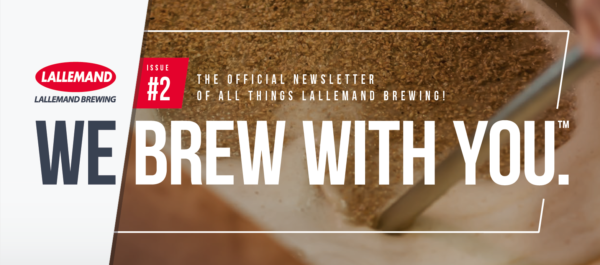Blog | Reading Time 3 minutes
A Saccharomyces cerevisiae for NABLAB production? Challenge accepted!
Let’s explore the process of producing NABLAB
The production of non-alcohol beers and low-alcohol beers (NABLAB) requires one of two production paths: either producing a full-strength beer (~5.0% ABV) and mechanically removing the ethanol; or through limiting ethanol production by controlling fermentation through biological methods. Both approaches involve complex processes and have pros and cons. Technological implementation often includes techniques such as thin-membrane evaporation, vacuum distillation, or nanopore filtration. Whereas biological control can be achieved through solid-state continuous fermentation, arrested fermentation, or using nontraditional yeast strains that are limited in carbohydrate assimilation. These methods are routinely employed and, as technology advances and our understanding of biological processes improves, producing very low-alcohol beer becomes more efficient.
However, for independent brewers, the challenges remain significant. Capital investment poses a major barrier to entry into the low-alcohol beer sector. Small-to-medium-sized breweries, account for a substantial portion of the US (24-27%) and global (11-12%) beer market and often opt for alternative methods that leverage existing infrastructure or contract facilities. One economically viable approach is the use of nontraditional yeast strains like Pichia kluyveri, Saccharomycodes ludwigii, or Zygosaccharomyces rouxii, which can employ pre-existing infrastructure and typically don’t require significant changes to existing processes. However, a key challenge arises from cultivating non-domesticated and non-traditional yeast strains. Brewing wort is a complex medium that favors the growth of more domesticated microorganisms, potentially adding to the difficulty of using non-Saccharomyces yeasts. Under optimal conditions, wort is best suited for those organisms adapted to its unique nutrient composition and environment.
The story behind LalBrew® LoNa™ development: from the brewery to the lab
The story behind LalBrew® LoNa™ is in the name: a portmanteau of “low/no-alcohol beer”, derived from 100% domesticated Saccharomyces cerevisiae stock. LoNa™ is a multi-lineage hybrid, bred from both wine and beer yeast lineages and designed to provide many of the benefits of domesticated S. cerevisiae metabolism, but with minimal ethanol output. This is mediated by a lack of functional genes necessary for fermenting polysaccharides – those encoding for external hydrolases and transport proteins normally required for the uptake and metabolism of polysaccharides such as maltose and maltotriose.
LoNa™ was designed to minimize many of the issues associated with common biological controls used in low-alcohol beer production. During the normal production process of brewer’s wort, thermal degradation of barley material results in the development of carbonyl compounds through lipid oxidation, Maillard reaction, Strecker degradation, and aldol condensation, which can be associated with off-flavors if not utilized properly. Many of these compounds are significantly diminished or covered during a standard ethanol fermentation, with S. cerevisiae having the metabolic pathways capable of processing these substrates. This is a distinct advantage over the previously mentioned non-traditional yeasts, which may end up exacerbating “worty” flavors with the development of unintended secondary metabolites.
The unique functional characteristics of domesticated S. cerevisiae remain preserved in LoNa™, providing a more consistent and reliable method of control over a fermentation. This results in predictable behavior that does not require special infrastructure or equipment.
Testing LoNa™ in real conditions: from the lab to the field
As with previous product launches, prior to the release of LoNa™, Lallemand worked with breweries around the world to see how the product might behave in a true production environment. This is a necessary step as development work done in the laboratory does not always translate well into the real world. Breweries selected for trials fulfilled specific criteria agreed by Lallemand in advance of the trial taking place. Key was the intention to produce, or already be producing a non-alcohol beers and low-alcohol beers, but also to have the ability to pasteurize. NABLAB beers are uniquely vulnerable to spoilage, and brewers already possessing the experience and knowledge of producing them were sought out to receive trial product from the first batch.
To learn more about LoNa™: www.lallemandbrewing.com/lona
Published Jan 5, 2024 | Updated Jan 31, 2024
Related articles
Need specific information?
Talk to an expert

![[Webinar] Introducing LalBrew® LoNa™: A game-changing solution for NABLAB beers](https://admin.lallemandbrewing.com/wp-content/uploads/2023/07/LoNa-NABLAB-Webinar-FBsharinglink-Crowdcast-600x315.jpg)
